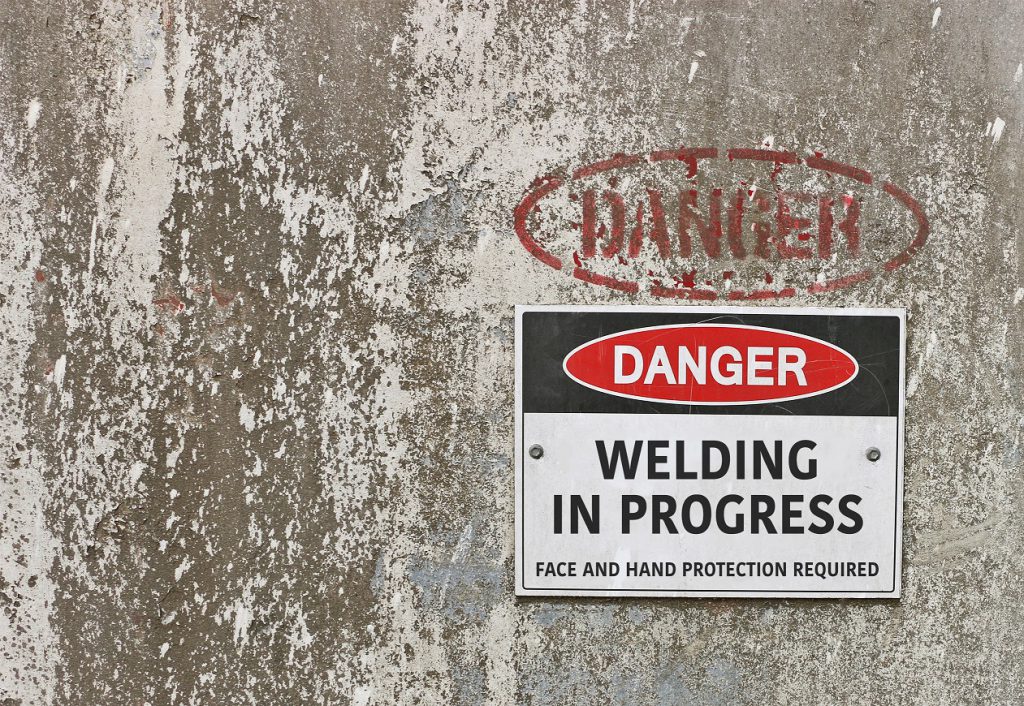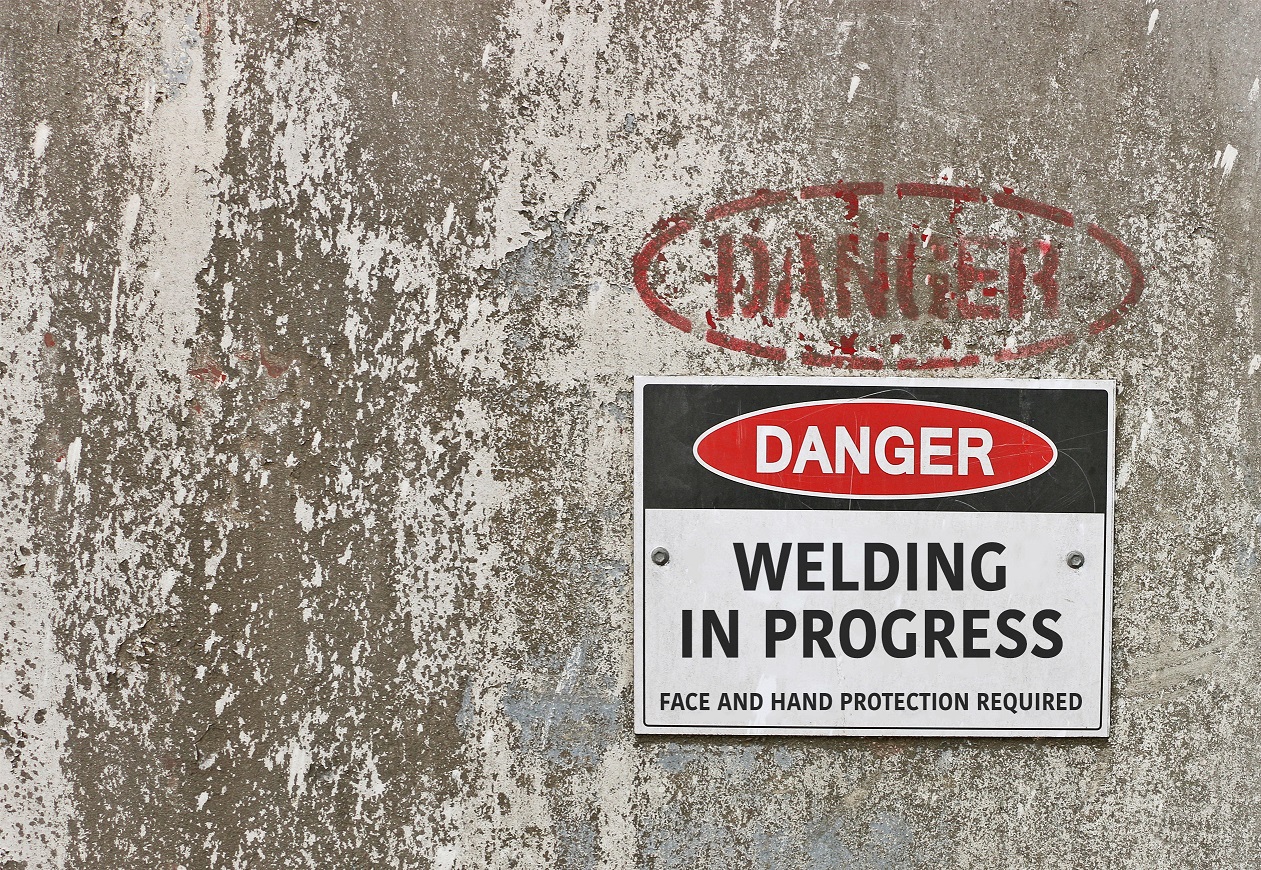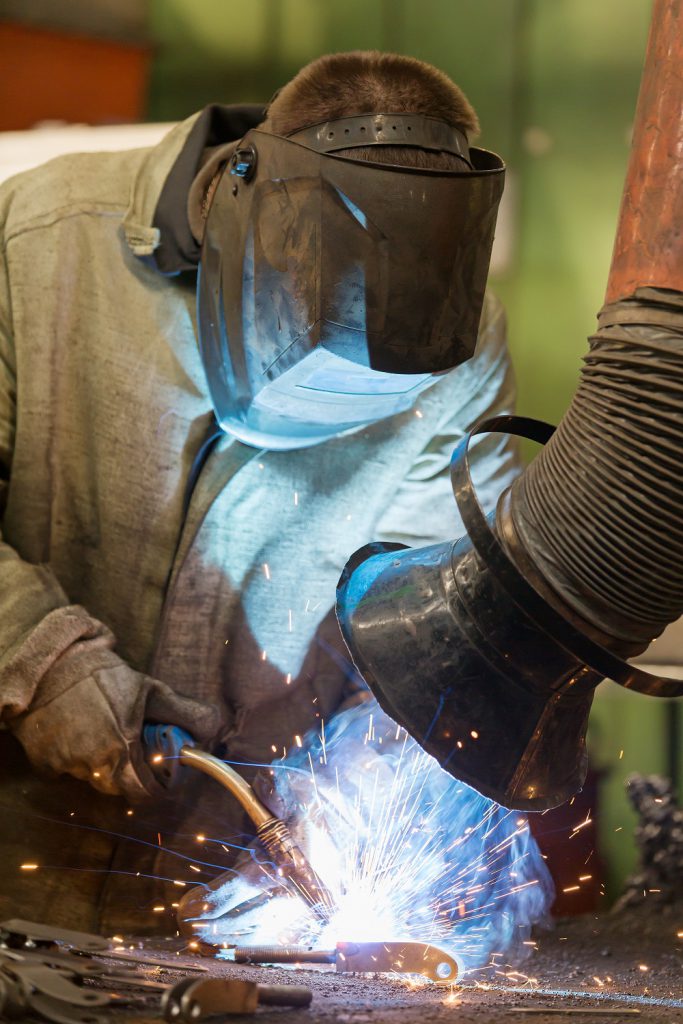Employees, colleagues and friends in the workplace deserve to be safe at all times.

Welding & Cutting fumes in Engineering workshops are part of normal working conditions. But do they have to be dangerous to those working in them?
Substances hazardous to health in welding, cutting and allied processes include:
- fume and gases from welding and cutting;
- dust from gouging and abrasive blasting;
- paints, lubricants, de-greasing and stripping fluids;
- pickling pastes;
- work in confined spaces and inert gases (eg nitrogen, argon).
To control these measures your Employer must invest in the following:
- Dust and fume extraction equipment
- Personal protective equipment (eg gloves, masks, respirators)
However you have a duty to use the properly and co-operate with any monitoring.
Help in identifying the right controls appears on the e-COSHH essentials for welders website.
Enter information about the welding process, the location, and the metal welded to get the right control information.
Table 1. Source and Health Effect of Welding Fumes.
| Source and Health Effect of Welding Fumes | ||
|---|---|---|
| Fume Type | Source | Health Effect |
| Aluminum | Aluminum component of some alloys, e.g., Inconels, copper, zinc, steel, magnesium, brass and filler materials. | Respiratory irritant. |
| Beryllium | Hardening agent found in copper, magnesium, aluminum alloys and electrical contacts. | “Metal Fume Fever.” A carcinogen. Other chronic effects include damage to the respiratory tract. |
| Cadmium Oxides | Stainless steel containing cadmium or plated materials, zinc alloy. | Irritation of respiratory system, sore and dry throat, chest pain and breathing difficulty. Chronic effects include kidney damage and emphysema. Suspected carcinogen. |
| Chromium | Most stainless-steel and high-alloy materials, welding rods. Also used as plating material. | Increased risk of lung cancer. Some individuals may develop skin irritation. Some forms are carcinogens (hexavalent chromium). |
| Copper | Alloys such as Monel, brass, bronze. Also some welding rods. | Acute effects include irritation of the eyes, nose and throat, nausea and “Metal Fume Fever.” |
| Fluorides | Common electrode coating and flux material for both low- and high-alloy steels. | Acute effect is irritation of the eyes, nose and throat. Long-term exposures may result in bone and joint problems. Chronic effects also include excess fluid in the lungs. |
| Iron Oxides | The major contaminant in all iron or steel welding processes. | Siderosis – a benign form of lung disease caused by particles deposited in the lungs. Acute symptoms include irritation of the nose and lungs. Tends to clear up when exposure stops. |
| Lead | Solder, brass and bronze alloys, primer/coating on steels. | Chronic effects to nervous system, kidneys, digestive system and mental capacity. Can cause lead poisoning. |
| Manganese | Most welding processes, especially high-tensile steels. | “Metal Fume Fever.” Chronic effects may include central nervous system problems. |
| Molybdenum | Steel alloys, iron, stainless steel, nickel alloys. | Acute effects are eye, nose and throat irritation, and shortness of breath. |
| Nickel | Stainless steel, Inconel, Monel, Hastelloy and other high-alloy materials, welding rods and plated steel. | Acute effect is irritation of the eyes, nose and throat. Increased cancer risk has been noted in occupations other than welding. Also associated with dermatitis and lung problems. |
| Vanadium | Some steel alloys, iron, stainless steel, nickel alloys. | Acute effect is irritation of the eyes, skin and respiratory tract. Chronic effects include bronchitis, retinitis, fluid in the lungs and pneumonia. |
| Zinc | Galvanized and painted metal. | Metal Fume Fever. |
Table 2. Source and Health Effect of Welding Gases.
| Source and Health Effect of Welding Gases | ||
|---|---|---|
| Gas Type | Source | Health Effect |
| Carbon Monoxide | Formed in the arc. | Absorbed readily into the bloodstream, causing headaches, dizziness or muscular weakness. High concentrations may result in unconsciousness and death |
| Hydrogen Fluoride | Decomposition of rod coatings. | Irritating to the eyes and respiratory tract. Overexposure can cause lung, kidney, bone and liver damage. Chronic exposure can result in chronic irritation of the nose, throat and bronchi. |
| Nitrogen Oxides | Formed in the arc. | Eye, nose and throat irritation in low concentrations. Abnormal fluid in the lung and other serious effects at higher concentrations. Chronic effects include lung problems such as emphysema. |
| Oxygen Deficiency | Welding in confined spaces, and air displacement by shielding gas. | Dizziness, mental confusion, asphyxiation and death. |
| Ozone | Formed in the welding arc, especially during plasma-arc, MIG and TIG processes. | Acute effects include fluid in the lungs and hemorrhaging. Very low concentrations (e.g., one part per million) cause headaches and dryness of the eyes. Chronic effects include significant changes in lung function. |
Table 3. Organic Vapours as a result of Welding.
| Source and Health Effect of Organic Vapours as a result of Welding | ||
|---|---|---|
| Gas Type | Source | Health Effect |
| Aldehydes (such as formaldehyde) | Metal coating with binders and pigments. Degreasing solvents | Irritant to eyes and respiratory tract. |
| Diisocyanates | Metal with polyurethane paint. | Eye, nose and throat irritation. High possibility of sensitization, producing asthmatic or other allergic symptoms, even at very low exposures. |
| Phosgene | Metal with residual degreasing solvents. (Phosgene is formed by reaction of the solvent and welding radiation.) | Severe irritant to eyes, nose and respiratory system. Symptoms may be delayed. |
| Phosphine | Metal coated with rust inhibitors. (Phosphine is formed by reaction of the rust inhibitor with welding radiation.) | Irritant to eyes and respiratory system, can damage kidneys and other organs. |
Have you had an inspection of your premises recently and need to implement some changes?
Are you the factory manager or business owner?
Providing equipment to protect your welders does not have to be expensive.
Investing in one of our low-cost new, used or refurbished fume extraction systems will save you so more than money in the long run. Plus, your business will be compliant to industry standards too.
We supply a wide range of NEW welding fume extracting units delivered, commissioned and COSHH tested, so you don’t have to worry about a thing! (UK orders only).
Contact our Technical Sales Team to find out which system is the perfect solution for your workplace.



comments
I have got many information from this article. Want to know more and waiting for next one.